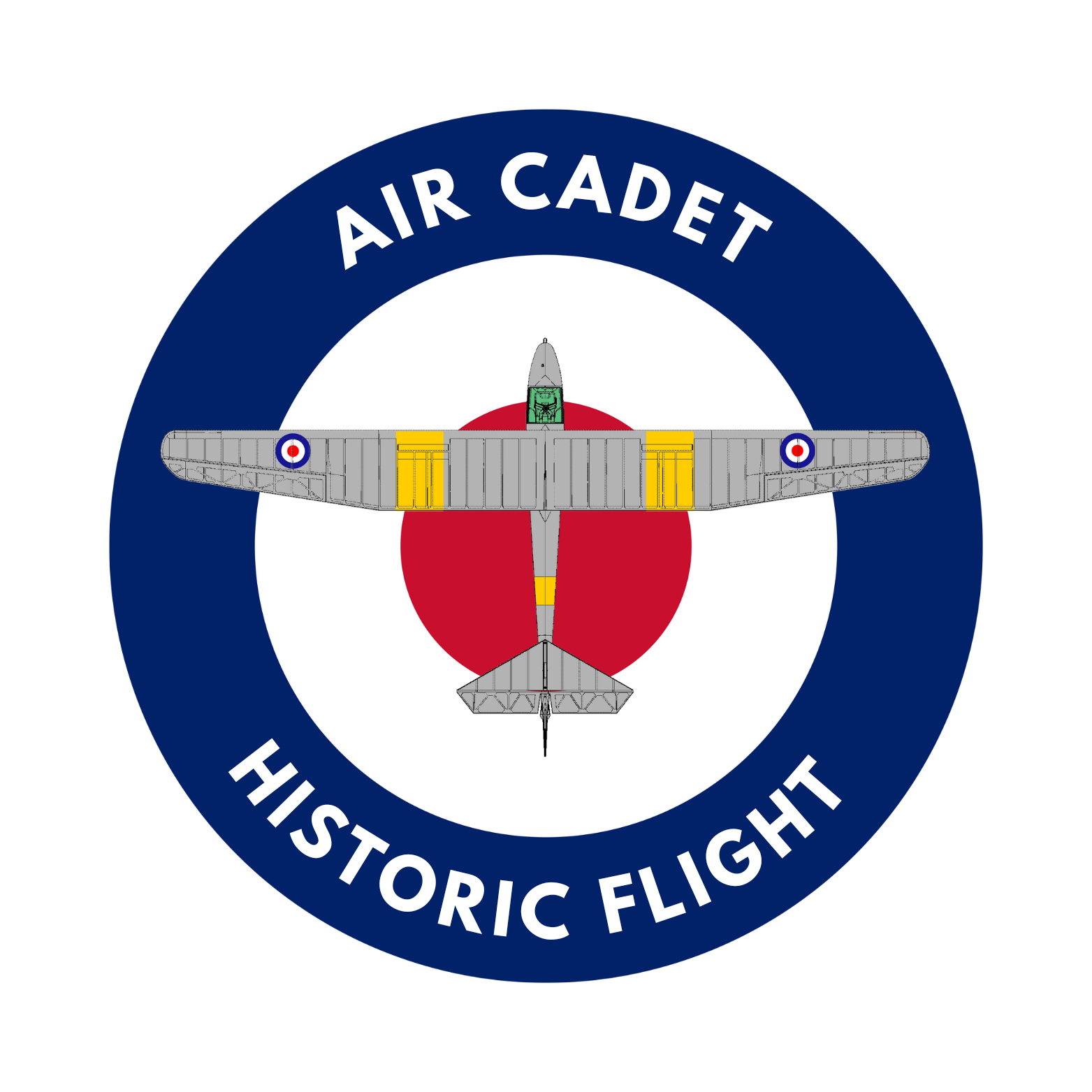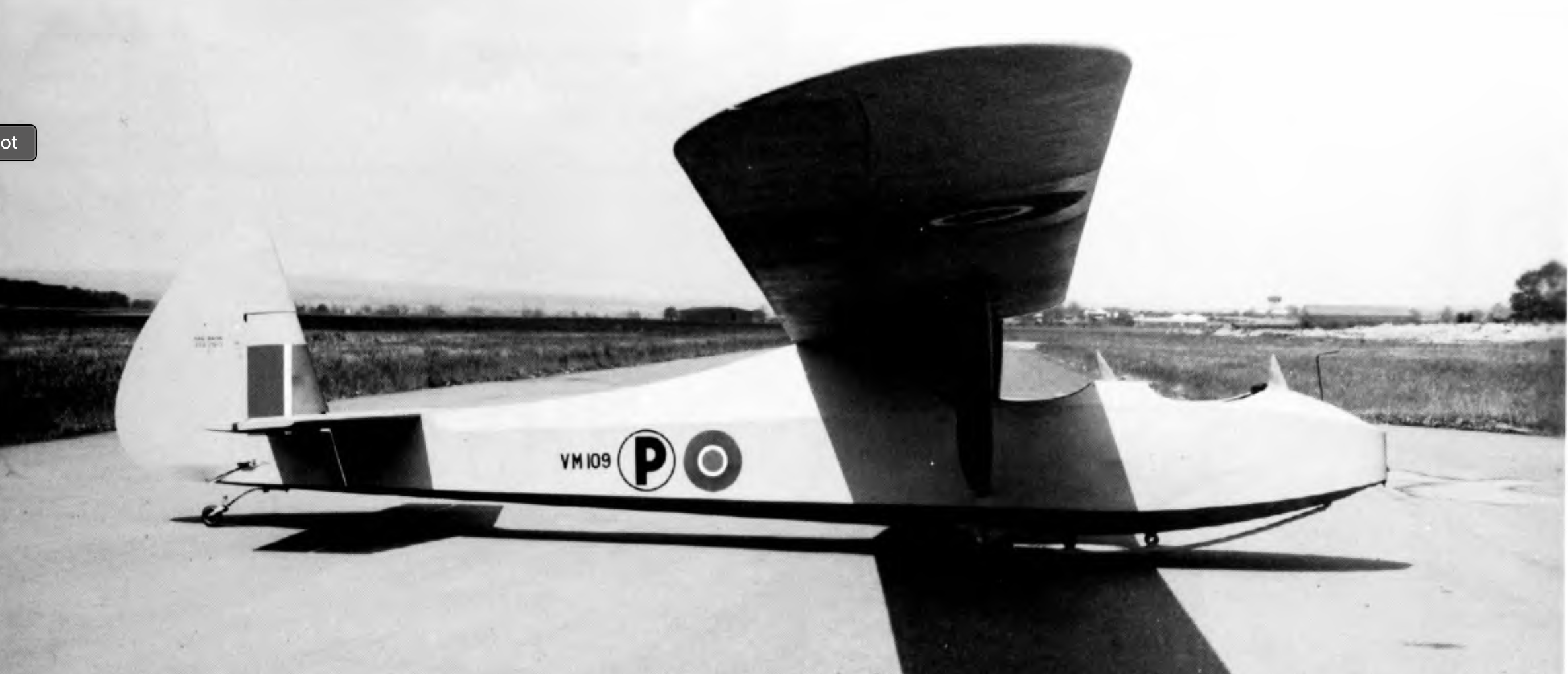In 1944 the RAF Air Training Corps did not approve of the T21 design and so the Air Ministry produced their own specification, TX 8/45, which led to Slingsby producing the T24 known as the “Falcon 4”. The original Air Ministry specification was complex & demanding, seemingly written by a team familiar with powered aircraft trainers. Eventually the most demanding requirements (such as the ability to be picketed in 90mph winds and a 120mph aero-tow speed) were reduced but the design remained over-specified. Construction was delegated to Martin Hearn Ltd. (Cheshire) and a 16.56 meter flapped wing prototype was produced which weighed a full 80Kg more than the T21B. Subsequently the flaps were replaced with spoilers, saving 20Kg.
Three Aircraft were produced and delivered to the RAF, but the aircraft was large, (steps cut into the fuselage were required to access the cockpits) and heavy, with poor soaring performance (Min Sink was 260 fpm) and although the handling was acceptable other problems (such as aileron flutter at 65Kt) remained. Unsurprisingly there was little interest from civilian clubs.
Two of the three aircraft were written off, the third (VM109) was used by No 168 Gliding School at Detling from 1949 to March 1950, the moving to other gliding schools before being sold the Wester Area Gliding Club (Cosford) in 1953 and disappearing without trace!
The photo is taken from “Slingsby Gliders” by Martin Simons (now out of print) and is one of only a handful of photos surviving.
Subsequently the RAF Air Training Corps went on to purchase the privately developed Sedburgh and the Cadet TX Mk.3 which proved much more successful…

